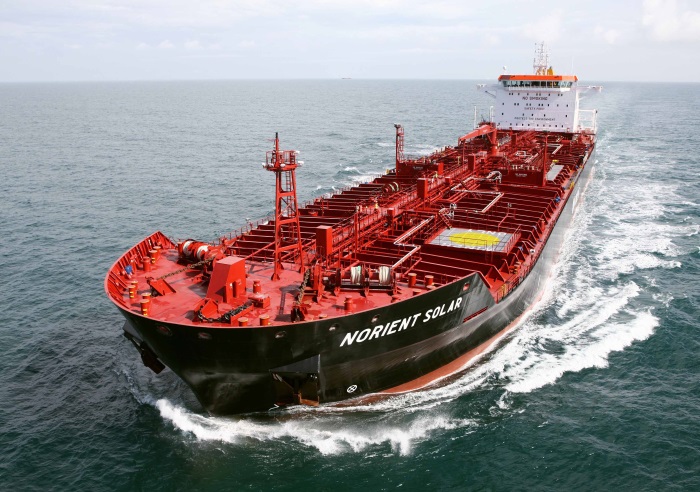The shipping markets have been exhibiting a mixed bag of performance lately. In its latest weekly report, shipbroker Xclusiv said that “last week a tragic event overshadowed the news. Seismic activity in south east Turkey & Syria led to a biblical catastrophe with tens of thousands of dead, hundreds of thousands missing, thousands of homeless people, destroyed infrastructures & shattered economy. Many countries have sent rescue teams to assist the local authorities while humanitarian aid is gathering to support the people in need. We deeply sympathise with the families of all the victims and stand close to our neighbours that suffer such a great tragedy”.
According to Xclusiv, “the earthquake’s aftermath also halted operations at Ceyhan, stopping key crude oil flows from Iraq & Azerbaijan. The Iraqi crude pipeline to Turkey’s Ceyhan oil export hub resumed flows on Tuesday and a tanker docked to load crude, but the exports of Azeri crude have not resumed yet. The major earthquake has also affected the Turkish port of Iskenderun. The port is damaged, containers were destroyed, and the port management doesn’t know when the port can undergo a full inspection of the damage or how long the recovery efforts will take. The US Department of the Treasury has declared that all transactions related to earthquake relief efforts in Syria that would otherwise be prohibited by the Syrian sanction’s regulations, are authorized through August 8, 2023. This doesn’t authorize any transactions concerning oil or petroleum products of Syrian origin, but it may be a good start for the return of Syrian economy to the global stage. This partial lifting of sanctions may be helpful and supportive to the seaborne trade in the area, mainly in the dry bulk and container segment but it’s too early to draw safe conclusions”.
Xclusiv also added that “within the first week of EU’s sanctions on Russian product oil, the freight rates of product tankers (especially of MR’s) have seen a dynamic come back, with the MR Atlantic Basket climbing to USD 55,857/day, an increase of around USD 45K/day compared to previous week. WTI closed the week at around USD 80/barrel, up nearly 11% w-o-w, increasing fears that oil may resume its rally and reach to USD 100/ barrel in 2023. Russia’s announcement to cut oil production by 500,000 bpd (5% of output), as response to EU’s/G7 price cap, with OPEC+ not planning any action to that decision, as well as Saudi Arabia’s decision to raise prices for its flagship crude for Asian buyers for the first time in six months, amid an expectation of oil demand recovery, especially from China, were the main of oil price increases. However, a lack of mobility due to cold weather and a slowdown in industrial activity held back India’s fuel demand in the first month of 2023, being 4.6% lower than December 2022 at 18.7 million tonnes, after hitting a nine-month high in December. Meanwhile, three companies in Singapore and Malaysia have been sanctioned by the U.S Treasury Department for their roles in facilitating the sale and shipment of millions of dollars’ worth of petroleum and petrochemicals on behalf of an Iranian company. Demand for oil storage tanks is soaring in SE Asia, in a sign that a flood of Russian fuel is being blended and re-exported globally”.
Meanwhile, “the dry bulk market is looking for signs of recovery, with T/C averages of Supramax, Panamax and Handysize being around USD 2K/day and USD 3K/day higher than the daily OPEX respectively. India’s government replied positively to those signs, as it will raise its capital expenditure by 33% to 122bn on infrastructure projects, increasing thirst for coal imports. Analysts expect that ArcelorMittal’s steel shipments will increase by roughly 5% this year. Global steel demand, excluding China, is expected to rebound by 2% to 3% this year, following an 11% drop in shipments last year due to economic slowdown. In China the lack of funding from local governments may constrain infrastructure sector & pose a challenge to steel demand recovery in 2023. China has planned to invest Yuan 6.904 trillion (USD 1.018 trillion) in these projects in 2023, 0.5% higher y-o-y. but investments on major projects in major regions were already 9.6% higher from 2021 in 2022”, the shipbroker said.
Finally, “the container market is the one that really ‘bled’ within 2022. The average freight rate for a TEU has stabilized since the beginning of December to just above USD 2K/container, returning to September 2020 levels, 79% down from the 2022 highs of exactly one year ago and 82% lower than the highest price reached by its average container freight rate (according to FBX – Freightos Baltic Index), USD 11,137 on 9 September 2021. Gradually all the factors that created distortions in the container market (closed ports, ship congestion, problems in the supply chain) and were results of the pandemic have disappeared and consequently the market is returning to normality. It is no coincidence that AP Moller Maersk, the second largest container ship owner, has announced that profits for 2023 will be down 85% compared to 2022”, Xclusiv concluded.
Source: Hellenic Shipping News






